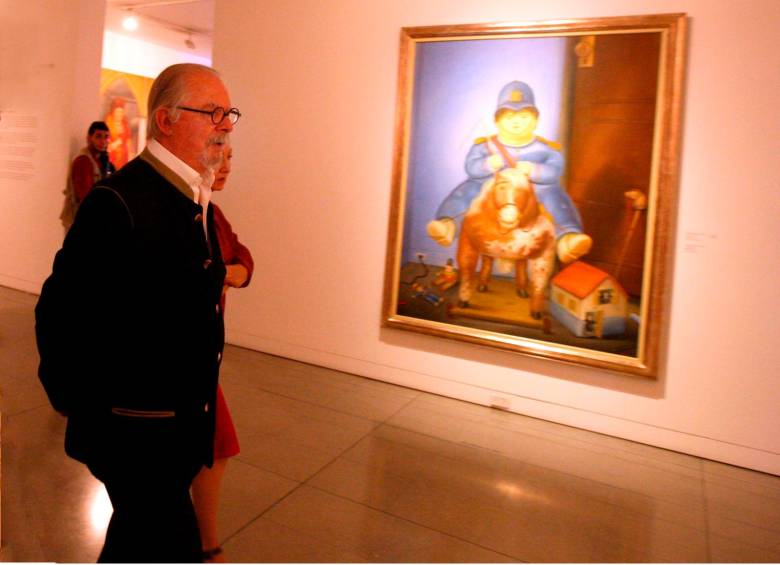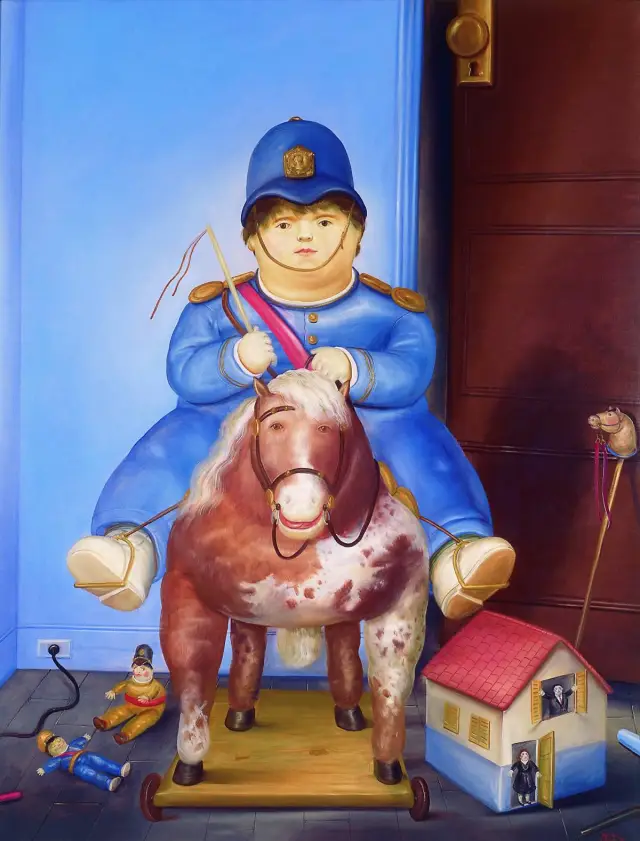“Pedrito a caballo” was the favorite artwork of the master Fernando Botero, the one he loved the most, but also the one that caused him the most pain. This painting portrays the love and anguish of grieving the loss of a child.
The artwork is a heartbreaking tribute from a grieving father to his son, tragically lost in a car accident between Seville and Cordoba in 1974, Spain. The death of his son Pedrito, at only four years old, was a devastating blow for him. The artist almost lost his right hand, had a finger amputated, and spent two months without painting.

Botero’s suffering is manifested in “Pedrito a caballo,” a masterpiece that reflects his internal struggle. The loss of Pedrito, his only son from his second marriage to Cecilia Zambrano, weighed heavily on the artist and led him to seclude himself in his studio in Paris. Amidst his immense sadness, Botero channeled his pain through his art, performing an act of greatness that required courage and determination.
The painting depicts Pedrito riding a toy horse, immersed in a deep blue background representing a typical child’s room. This background, with shades of blue and violet, creates a angelical sensation surrounding the child. Despite Pedrito’s English military attire, the painting does not convey a funereal tone.
Botero’s distinctive style, characterized by voluminous figures, imparts a sense of childlike innocence and joy to the painting. Nevertheless, the work is poignant in portraying the artist’s lost son. Two additional scenes in the lower corners show Botero holding the lifeless body of Pedrito and him and his wife, Cecilia, embracing in an empty home.

Instead of the stick horse present in other Pedrito works, Botero incorporates a larger horse, referencing the famous Trojan Horse from Greek mythology, placed to the side of the painting, leaning against a brown door.
“Pedrito a caballo” goes beyond being just a painting; it is the testament of a father who transformed his pain into art, creating a legacy that manifests in an eternal connection with his lost son. This masterpiece by Fernando Botero transcends the boundaries of art, becoming a symbol of love, loss, and hope that continues to move those who contemplate it at the Museum of Antioquia.




